Abstract
We compared three unstructured mathematical models, the master reaction, the square root, and the damage/repair models, for describing the relationship between temperature and the specific growth rates of bacteria. The models were evaluated on the basis of several criteria: applicability, ease of use, simple interpretation of model parameters, problem-free determination of model parameters, statistical evaluation of goodness of fit (chi 2 test), and biological relevance. Best-fit parameters for the master reaction model could be obtained by using two consecutive nonlinear least-square fits. The damage/repair model proved to be unsuited for the data sets considered and was judged markedly overparameterized. The square root model allowed nonproblematical parameter estimation by a nonlinear least-square procedure and, together with the master reaction model, was able to describe the temperature dependence of the specific growth rates of Klebsiella pneumoniae NCIB 418, Escherichia coli NC3, Bacillus sp. strain NCIB 12522, and the thermotolerant coccobacillus strain NA17. The square root and master reaction models were judged to be equally valid and superior to the damage/repair model, even though the square root model is devoid of a conceptual basis.
Full text
PDF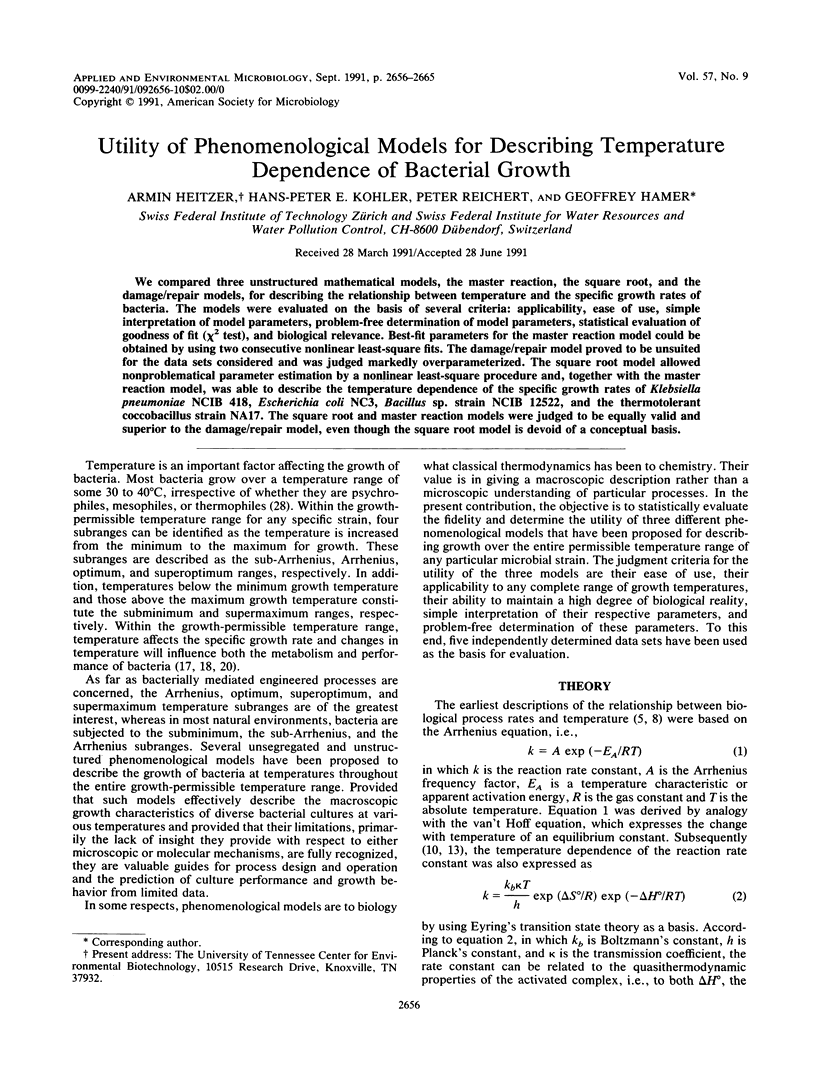
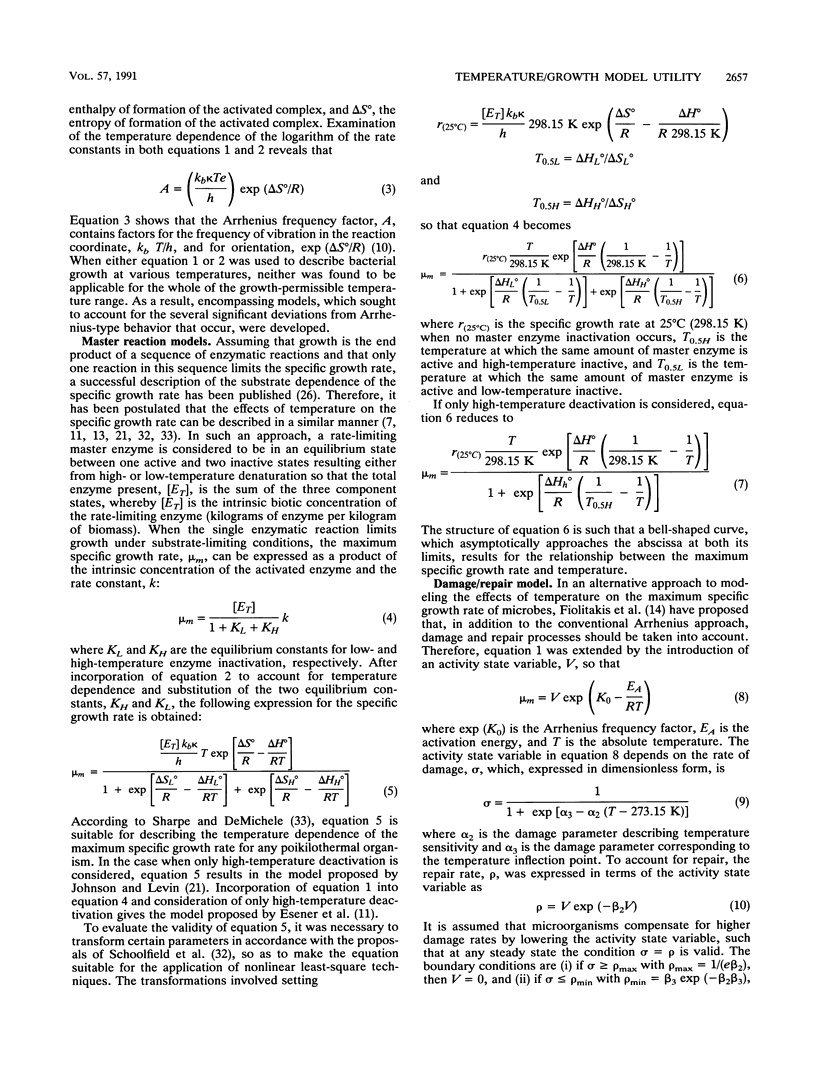
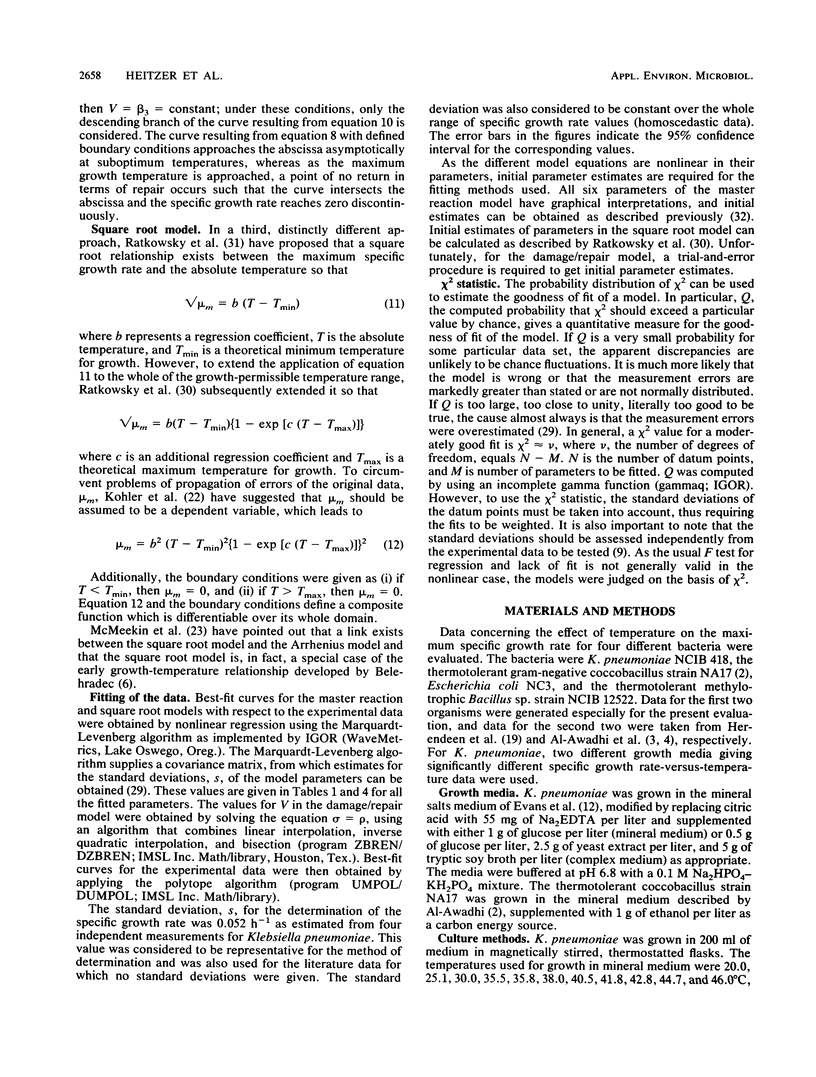
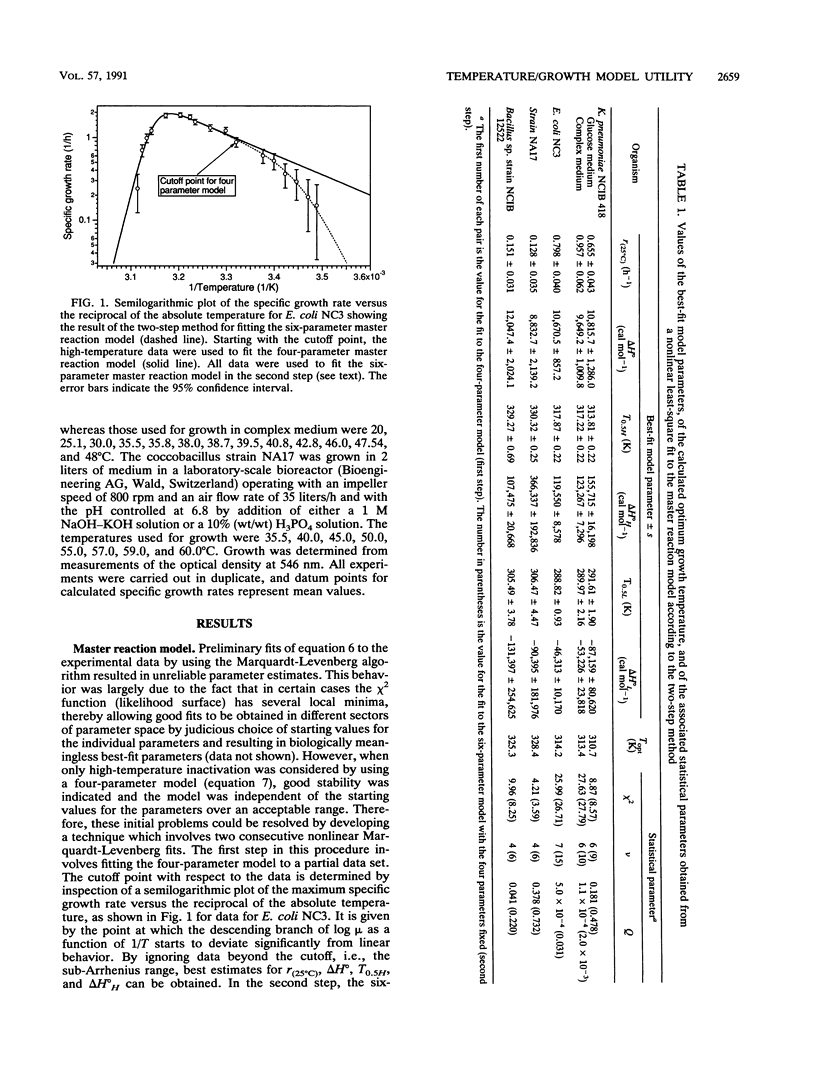
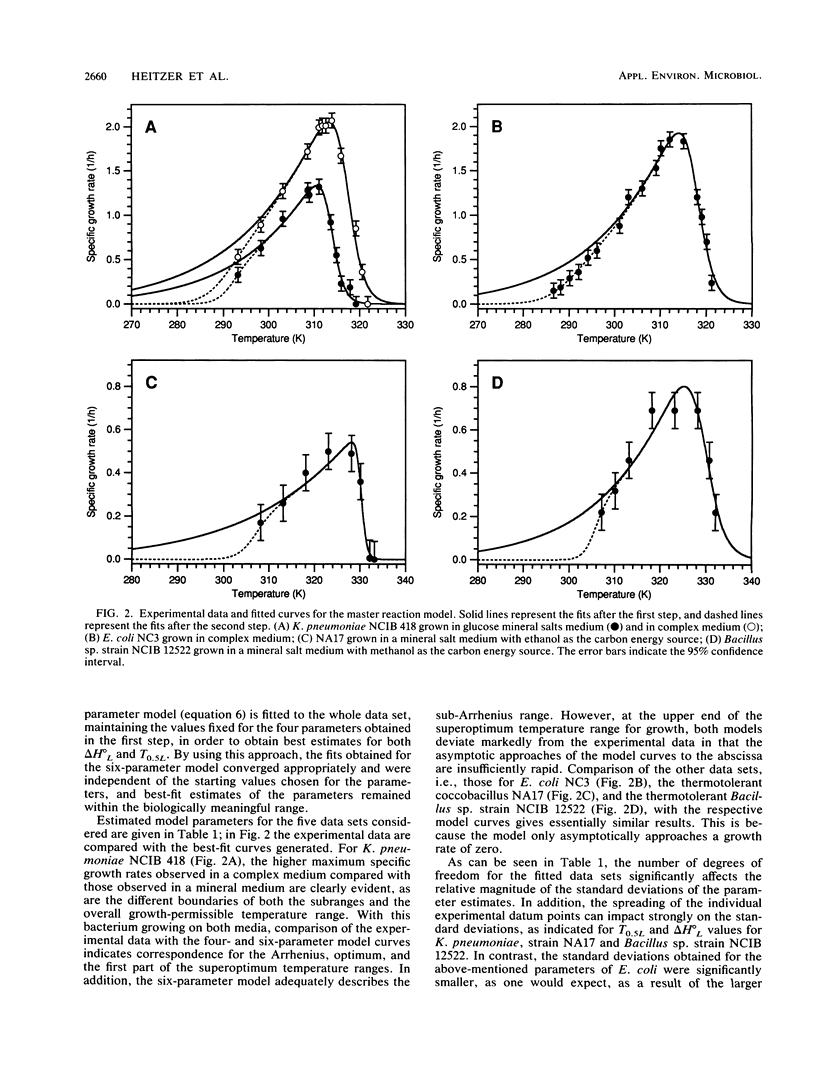
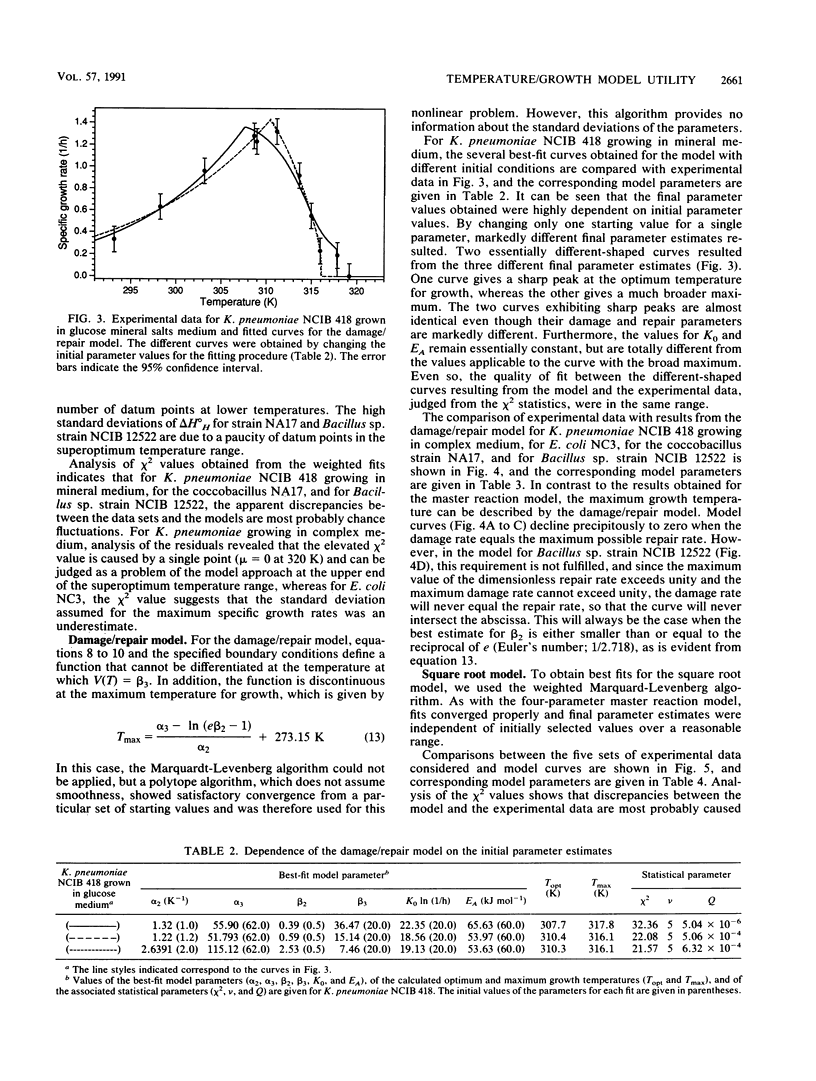
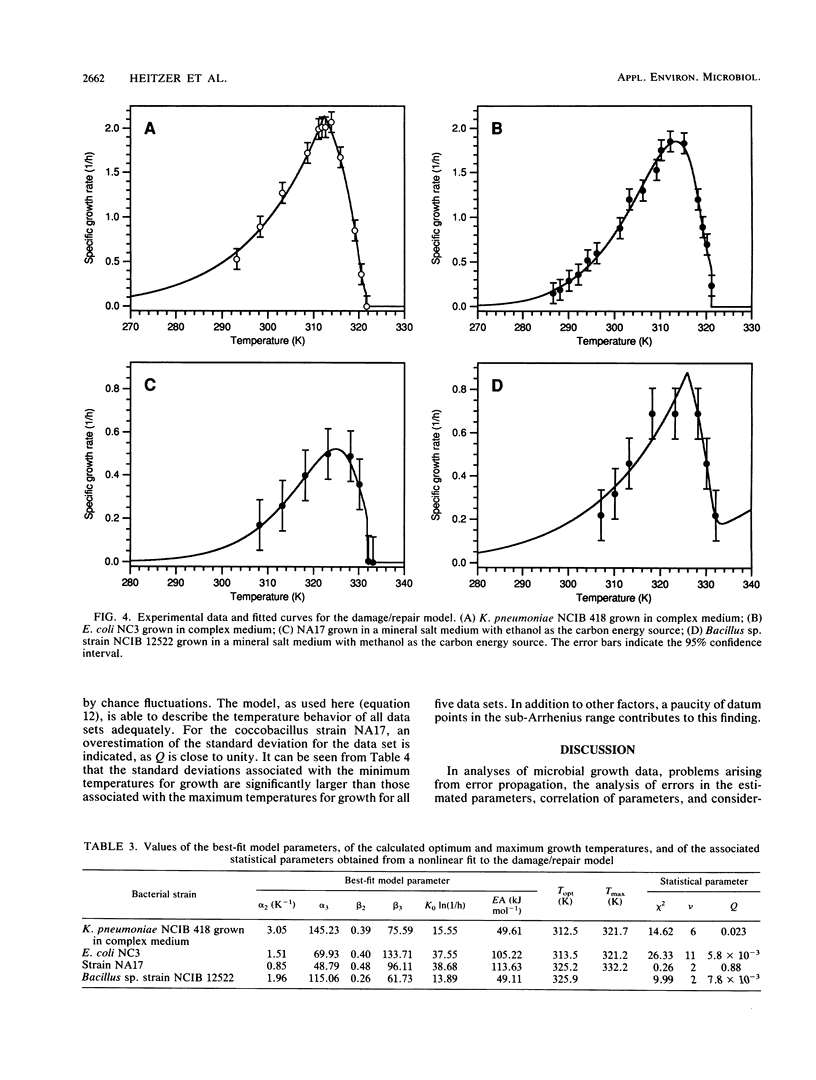
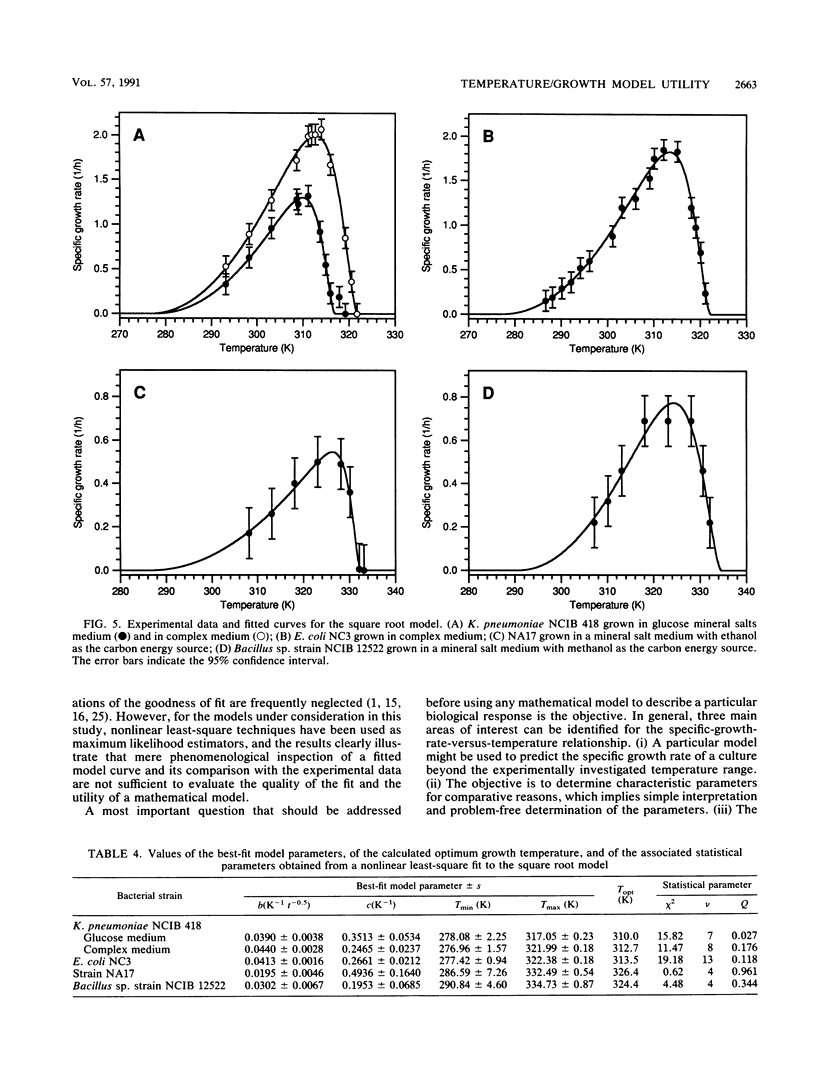
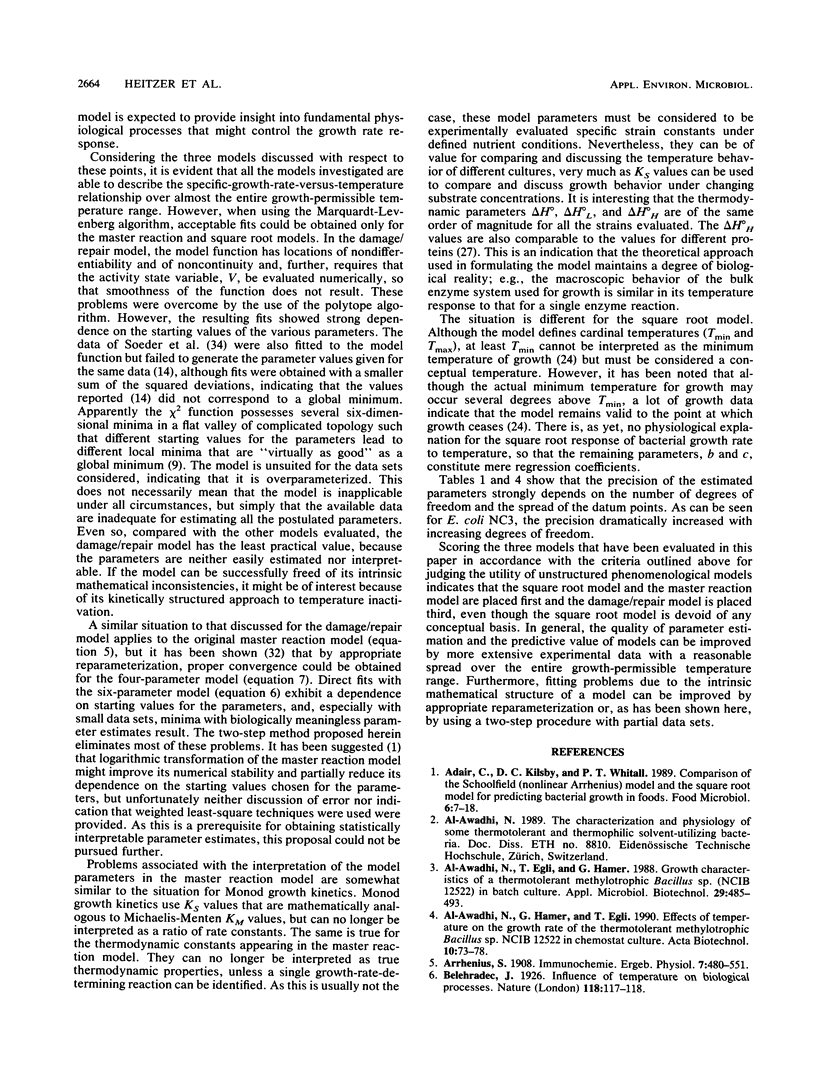
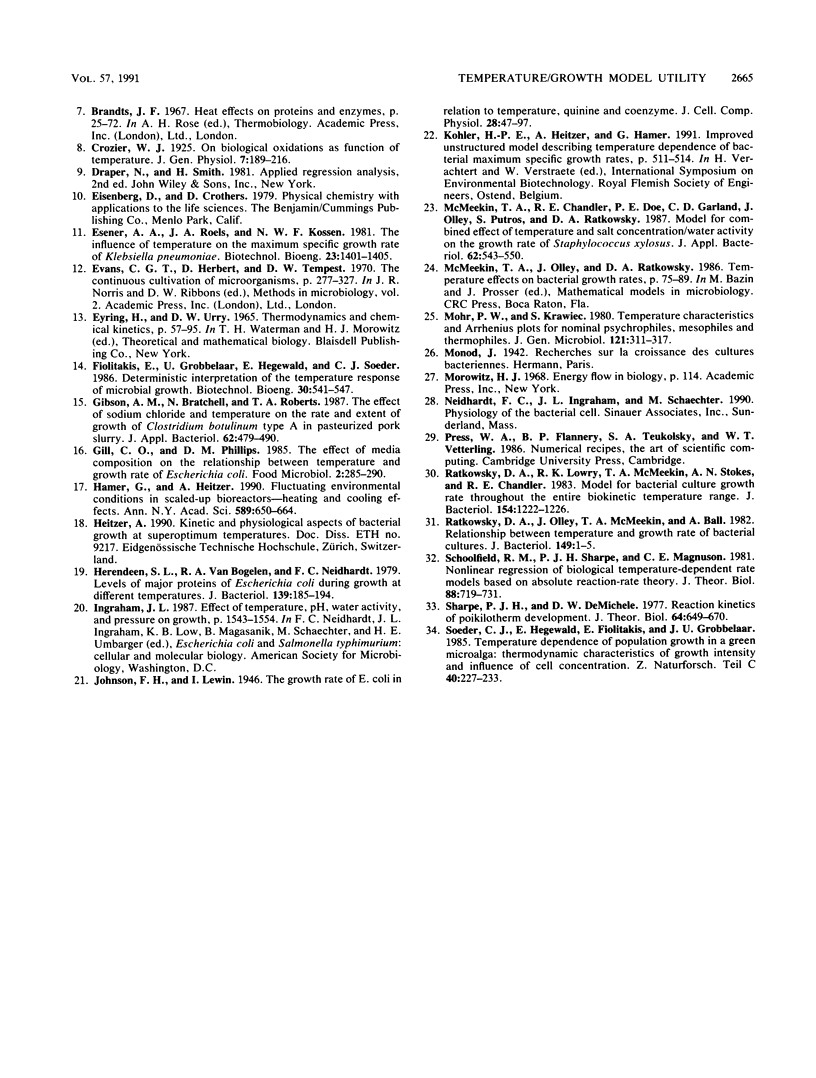
Selected References
These references are in PubMed. This may not be the complete list of references from this article.
- Gibson A. M., Bratchell N., Roberts T. A. The effect of sodium chloride and temperature on the rate and extent of growth of Clostridium botulinum type A in pasteurized pork slurry. J Appl Bacteriol. 1987 Jun;62(6):479–490. doi: 10.1111/j.1365-2672.1987.tb02680.x. [DOI] [PubMed] [Google Scholar]
- Herendeen S. L., VanBogelen R. A., Neidhardt F. C. Levels of major proteins of Escherichia coli during growth at different temperatures. J Bacteriol. 1979 Jul;139(1):185–194. doi: 10.1128/jb.139.1.185-194.1979. [DOI] [PMC free article] [PubMed] [Google Scholar]
- McMeekin T. A., Chandler R. E., Doe P. E., Garland C. D., Olley J., Putro S., Ratkowsky D. A. Model for combined effect of temperature and salt concentration/water activity on the growth rate of Staphylococcus xylosus. J Appl Bacteriol. 1987 Jun;62(6):543–550. doi: 10.1111/j.1365-2672.1987.tb02687.x. [DOI] [PubMed] [Google Scholar]
- Mohr P. W., Krawiec S. Temperature characteristics and Arrhenius plots for nominal psychrophiles, mesophiles and thermophiles. J Gen Microbiol. 1980 Dec;121(2):311–317. doi: 10.1099/00221287-121-2-311. [DOI] [PubMed] [Google Scholar]
- Ratkowsky D. A., Lowry R. K., McMeekin T. A., Stokes A. N., Chandler R. E. Model for bacterial culture growth rate throughout the entire biokinetic temperature range. J Bacteriol. 1983 Jun;154(3):1222–1226. doi: 10.1128/jb.154.3.1222-1226.1983. [DOI] [PMC free article] [PubMed] [Google Scholar]
- Ratkowsky D. A., Olley J., McMeekin T. A., Ball A. Relationship between temperature and growth rate of bacterial cultures. J Bacteriol. 1982 Jan;149(1):1–5. doi: 10.1128/jb.149.1.1-5.1982. [DOI] [PMC free article] [PubMed] [Google Scholar]
- Schoolfield R. M., Sharpe P. J., Magnuson C. E. Non-linear regression of biological temperature-dependent rate models based on absolute reaction-rate theory. J Theor Biol. 1981 Feb 21;88(4):719–731. doi: 10.1016/0022-5193(81)90246-0. [DOI] [PubMed] [Google Scholar]
- Sharpe P. J., DeMichele D. W. Reaction kinetics of poikilotherm development. J Theor Biol. 1977 Feb 21;64(4):649–670. doi: 10.1016/0022-5193(77)90265-x. [DOI] [PubMed] [Google Scholar]


